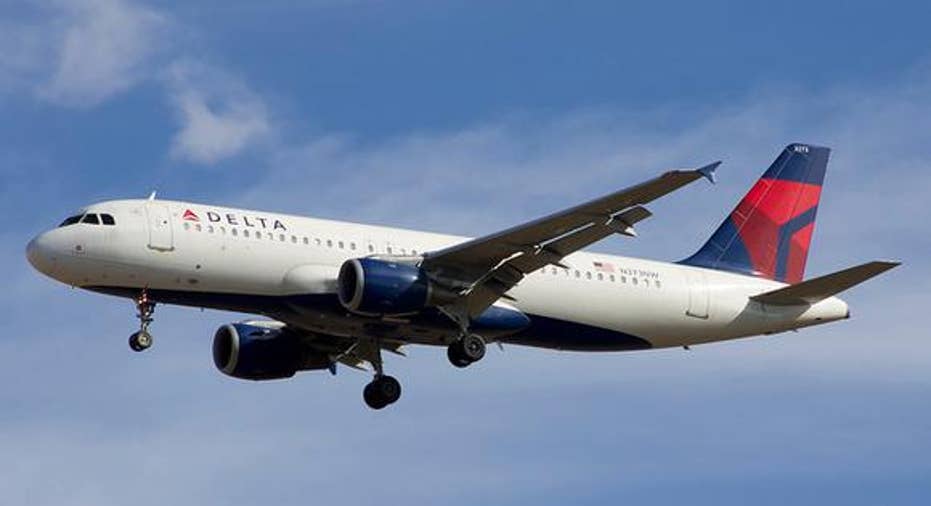U.S. Airlines Scramble for Cuba Flights

Last Tuesday, the U.S. and Cuba signed an historic agreement allowing scheduled flights between the two countries to resume after more than 50 years. This follows the renewal of diplomatic ties between the two countries last summer.
U.S. airlines are competing for rights to operate scheduled service to Cuba.
Travelers still need to certify that they qualify for one of a dozen "approved" categories to visit Cuba -- tourism is still officially banned. Yet airlines anticipate a rapid increase in demand for flights to Cuba.
As a result, the five largest U.S. airlines -- American Airlines , Delta Air Lines , United Continental , Southwest Airlines , and JetBlue Airways -- are now fighting to secure the rights for new flights to Cuba. Let's take a look at how this battle may play out.
It's all about HavanaThe U.S.-Cuba agreement allows U.S. carriers to fly up to 20 daily scheduled roundtrip flights from the U.S. to Havana, as well as up to 10 flights to each of Cuba's nine other international airports.
Some airlines will likely be interested in flying to Cuba's secondary airports. American Airlines has a major hub in Miami, home to a large Cuban-American community and just a few hundred miles from Cuba. JetBlue has a sizable focus city nearby in Fort Lauderdale. Both airlines could likely support flights from South Florida to secondary airports in Cuba to serve the "visiting friends and relatives" market.
American Airlines will likely become a major player in Cuba. Image source: American Airlines.
By contrast, in their press releases discussing the U.S.-Cuba air service agreement, Delta Air Lines and United Continental only mentioned filing for flights to Havana. (Southwest Airlines may also stick to Havana flights at first, though that's not certain.)
Due to the relatively modest demand for flights from the U.S. to Cuba's smaller airports, airlines don't necessarily need to file to operate these flights right away. There should be route authorities available for these airports after the initial allocation, allowing airlines to wait and see how demand shapes up.
By contrast, as Cuba's capital and largest city (by far), Havana should see strong flight demand almost from day one. As a result, airlines are likely to aim high as they apply for flights to Havana.
What will the airlines request?Based on their strong positions in South Florida, American Airlines and JetBlue will probably request permission to operate multiple daily flights to Havana from Miami and Fort Lauderdale, respectively.
The New York City metro area has the second largest Cuban-American population in the U.S. (Of course, it is also the largest city in the country.) Delta, United, American, and JetBlue all have hubs in the New York area. There is a good chance that all four will request permission to operate one or more daily flights from New York to Havana.
JetBlue will likely seek authority for multiple routes to Cuba. Image source: JetBlue Airways.
Additionally, Delta Air Lines will certainly request permission to fly to Havana from its largest hub in Atlanta. American Airlines will also probably want to fly to Havana from its No. 1 hub at Dallas-Fort Worth International Airport. It may also consider applying for routes from its hubs in Charlotte, Philadelphia, and Chicago.
United Continental may file for route authorities to Havana from its hubs in Houston, Washington, D.C., and Chicago. JetBlue may request flights to its Orlando focus city -- and perhaps also Boston -- in addition to Fort Lauderdale and New York.
Southwest is the big wild cardSouthwest Airlines' plans for Cuba are a big open question. The carrier only began flying beyond the U.S. a few years ago, following its merger with AirTran, and it is still in the early stages of its international expansion. However, due to its broadly distributed route network, Southwest could potentially support flights to Havana from numerous markets.
Southwest has identified Baltimore-Washington, Houston, and Fort Lauderdale as its key international gateways. Thus, it wouldn't be surprising to see it request flight allocations from all three markets to Havana. (This is complicated by the fact that Southwest's international terminal in Fort Lauderdale won't be ready until late 2017, at best.)
Southwest could potentially support flights to Cuba from several cities.
However, Southwest also has a large presence in other cities in the Southeast, including Atlanta, Orlando, and Tampa. It could potentially request route authorities from those cities in order to gain a first-mover advantage in the one Caribbean market where it isn't playing from behind. Finally, Southwest may be interested in flying to Havana from Chicago, its largest focus city.
Considering all of the players and all of the possible route opportunities, it seems likely that the 20 available roundtrip flights to Havana will not be nearly enough to meet the airlines' requests. That means the Department of Transportation will play a big role in determining which airlines will win and which ones will lose from the opening of the Cuban market.
The article U.S. Airlines Scramble for Cuba Flights originally appeared on Fool.com.
Adam Levine-Weinberg owns shares of JetBlue Airways and United Continental Holdings, and is long Jan. 2017 $17 calls on JetBlue Airways, long Jan. 2017 $40 calls on Delta Air Lines, Inc., and long Jan. 2017 $30 calls on American Airlines Group. The Motley Fool is long Jan. 2017 $35 calls on American Airlines Group. Try any of our Foolish newsletter services free for 30 days. We Fools may not all hold the same opinions, but we all believe that considering a diverse range of insights makes us better investors. The Motley Fool has a disclosure policy.
Copyright 1995 - 2016 The Motley Fool, LLC. All rights reserved. The Motley Fool has a disclosure policy.